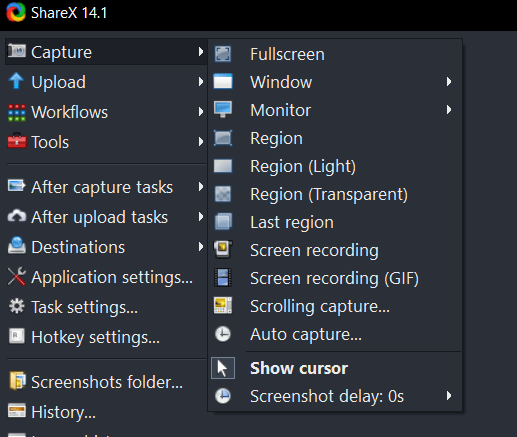
Hello, guy; ShareX for screen capture and file sharing needs naturally raises questions about its safety and security. In this section, we’ll provide an overview of the critical safety concerns associated with ShareX and set the stage for a detailed exploration of its safety measures.
Understanding ShareX’s Safety Measures
Open-Source Transparency
One of the fundamental pillars of ShareX’s safety is its open-source nature. Being open-source means that ShareX’s source code is freely available for inspection by anyone. This transparency fosters trust and allows security experts and community members to scrutinize the code for vulnerabilities or malicious intent. The open-source model ensures that any potential security issues can be identified and addressed promptly, enhancing the overall safety of the software.
Encryption and Security Protocols
ShareX prioritizes the security of user data by employing robust encryption and security protocols. When sharing files or uploading content to cloud storage services, ShareX utilizes encryption techniques to protect data during transit and storage. Additionally, ShareX implements secure authentication methods to prevent unauthorized access to user accounts and sensitive information. These encryption and security measures contribute to the overall safety of ShareX’s usage.
Privacy Controls
Privacy is another crucial aspect of safety, and ShareX provides users with granular privacy controls to safeguard their data. Users can configure privacy settings within ShareX to control who can access their shared files, links, and other content. By empowering users to manage their privacy settings, ShareX ensures that sensitive information remains protected and accessible only to authorized individuals.
Assessing Potential Risks
While ShareX implements various safety measures, it’s essential to acknowledge and assess potential risks associated with its usage.
Third-Party Integrations
ShareX offers integration with various third-party services and platforms for enhanced functionality. While these integrations expand ShareX’s capabilities, they may introduce potential risks, such as data exposure or security vulnerabilities. Users should exercise caution when using third-party integrations and ensure they trust the services they’re connecting to ShareX.
User Practices and Behaviors
Ultimately, ShareX’s safety also depends on user practices and behaviors. Users should follow best practices for online safety, such as using strong passwords, keeping software updated, and being cautious when sharing sensitive information. By practicing safe computing habits, users can mitigate potential risks associated with ShareX usage.
User Feedback and Community Response
The ShareX community monitors safety issues and provides feedback on the software’s performance and security. User feedback and community response can offer valuable insights into potential safety concerns or vulnerabilities. By actively engaging with the ShareX community and staying informed about updates and security advisories, users can contribute to the ongoing safety and improvement of the software.
Addressing Common Misconceptions
This section will address common misconceptions or myths about ShareX safety and provide clarification based on factual information and evidence.
Conclusion
ShareX implements various safety measures, including open-source transparency, encryption protocols, and privacy controls, to ensure the safety and security of its users. While no software is immune to risks, ShareX’s commitment to transparency, security, and community engagement contributes to its overall safety credentials. By following best practices for safe computing and staying informed about potential risks, users can confidently utilize ShareX for their screen capture and file-sharing needs.
